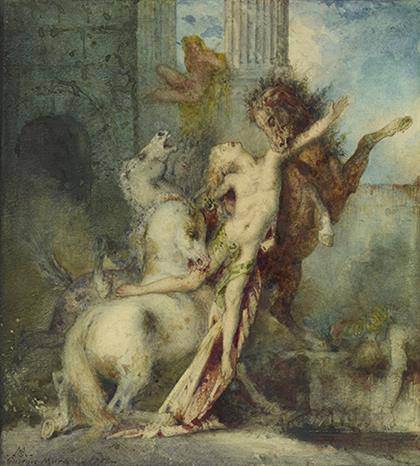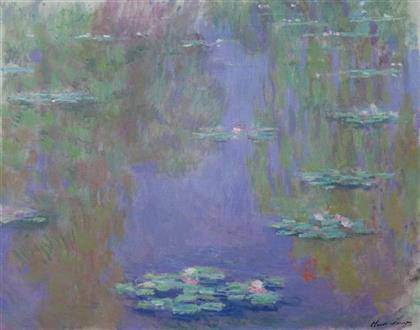
Gustave Moreau (French, 1826–1898)
Diomedes Devoured by Horses, 1866
Watercolor over graphite. The J. Paul Getty Museum, Los Angeles.
Gods and Heroes: European Drawings at Getty Museum ‘Gods and Heroes: European Drawings of Classical Mythology’, on view at the J. Paul Getty Museum, explores the pictorial representation of myths that have been instrumental in the formation of Western culture. November 19, 2013 – February 9, 2014]]>
Source: J. Paul Getty Museum
The exhibition features a selection of close to 40 drawings dating from the Renaissance to the 19th century. The stories involving the mythical gods and heroes of Greco-Roman antiquity have inspired artists for centuries, testing their abilities to represent complex narratives in visual form. The likes of Venus and Apollo, Hercules and Achilles, have proved to be particularly rich artistic subjects not only because they had extraordinary qualities―such as beauty, creativity, strength and courage―but also for the imperfections that made these characters even more compelling. Involved in love and lust, rivalry and treachery, crime and punishment, they possessed all the passions and flaws of mere mortals, but on a much larger scale.
Depending on when and where they worked, artists have approached mythical figures very differently, sometimes treating them as pretexts for visual experimentation. While Agostino Carracci’s “Triton Blowing a Conch Shell” (1600) was made in preparation for an elaborate frescoed scene on the vault of Palazzo Farnese in Rome, the drawing stands alone as a powerful depiction of the triton’s twisting body, which is depicted with striking illusionism.
Themes of love and lust are common in classical myths, as shown by Agostino Carracci’s drawing of “Cupid Overpowering Pan” (about 1590). Cupid’s crucial role in matters of love is, by comparison, merely hinted at in Jacques-Louis David’s Paris and Helen (1786).
The world of gods and heroes could also be a violent one, and drawings such as those depicting the labors of Hercules, attest to this. Giulio Romano’s “Hercules Resting after Killing the Hydra” (about 1535) shows the hero with an unusually lanky body, exhausted after he has killed the Hydra of Lerna, a multiheaded water serpent that was wreaking havoc. For his part, Gustave Moreau represents another of Hercules’s labors, namely when the hero had to capture the flesh-eating mares of Diomedes, the evil king of Thrace. Hercules, having succeeded in seizing the animals, feeds Diomedes’s body to his own horses. Moreau situated the atrocious episode in a dim setting that offsets the brilliant tones of the delicately executed watercolor―a refined technique that could hardly be in starker contrast with the gory nature of the subject it serves to represent.
Related content
The Poetry of Paper – Getty Museum (exhibition, 2013)
Follow us on:


